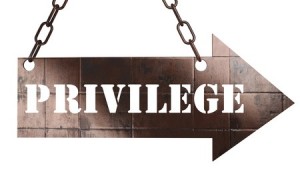
Hegemony and disability, a further social critique
Christopher Lytle MA CDS
 Hegemony in the context of disability works on a level where systems are negotiated by society’s institutions. The ability of an institution to accommodate new demands in terms of accessibility is an example of the institution’s flexibility. However, there are institutions that are so ingrained in history and social context that they prove to be almost unmovable (Omi & Winant, 1980). This is how disability and hegemony interact at the simplest level, but on another level there is a grid of interlocking systems that cater to the category of disability, as well as perpetuate discrimination in its current form. These systems of societal input inform and naturalize dialogues of discrimination.
Hegemony in the context of disability works on a level where systems are negotiated by society’s institutions. The ability of an institution to accommodate new demands in terms of accessibility is an example of the institution’s flexibility. However, there are institutions that are so ingrained in history and social context that they prove to be almost unmovable (Omi & Winant, 1980). This is how disability and hegemony interact at the simplest level, but on another level there is a grid of interlocking systems that cater to the category of disability, as well as perpetuate discrimination in its current form. These systems of societal input inform and naturalize dialogues of discrimination.
The hegemony of disability, as it is produced by an economy or market system, originates from institutional assumptions about the very nature of disability. These assumptions about the overarching distinctions of disability link to assumptions about causes, cures and prevention (Oliver, 1996). The assumption is that “in health terms… disability is pathology, and in welfare terms, that disability is a social problem [meaning that] treatment and cures are the appropriate societal responses to pathologies and problems” (Oliver, 1996: 129).
These are systems that sequester individuals into definable traits and are perpetually producing unequal treatment. Under a system such as this, one can expect to know disability in a certain form while viewing the world through a lens that is informed by information that is not reflexive in nature. Governments, individuals, groups and institutions that rationalize, and ultimately sanction, how disability is to be treated will create further systems that will reinforce disability’s second class status. The argument behind this is that since disability is seen as something to be fixed instead of incorporated into society, programs that employ staff and resources are set up to work with a devalued population. Such is the case with sheltered workshops in Ontario. These organizations produce employees that have a vested interest in maintaining their employment within the system while systematically devaluing a potential labour force.
A welfare state provides services and creates a positive view for those who are involved with the production of services rather than those who are on the receiving end, the consumers (Oliver, 1991). Viewing disability as unequal in a society that has created itself around specific ideals will have one result. Societies that create groups to aid devalued identities may perpetuate discrimination in the case that the maintenance of the group itself becomes a priority above the people that it attempts to help.
The theory of hegemony leads to an understanding of how social systems reinforce discriminatory practices. The danger is that refusal to change systematic approaches employed to deal with, and identify disability, may result in the perpetuation of corrupt ideologies. The aspects that make hegemony a tough concept to battle is that there are many ramifications that need to be given equal scrutiny. Employment, welfare, education and accessibility can be influenced by hegemonic ideas that are reinforced by social systems of thought that reproduce stigma. The disability movement has created itself in direct response to hegemonic paradigms so that law and unequal social systems can be engaged and rectified. Hegemonic values have to be questioned by those who can be reflexive and view their interactions with society appropriately .
Oliver, M. (1991). Speaking out: Disabled People and State Welfare. In. Dalley, G. (Ed). Disability and Social Policy. London. Policy Studies Institute.
Omi, M., Winant, H. (1980). Racial Formation in the United States: From the 1960’s to the 1980’s. New York. Routledge.
Table of Contents
Compliance Made Easy®

